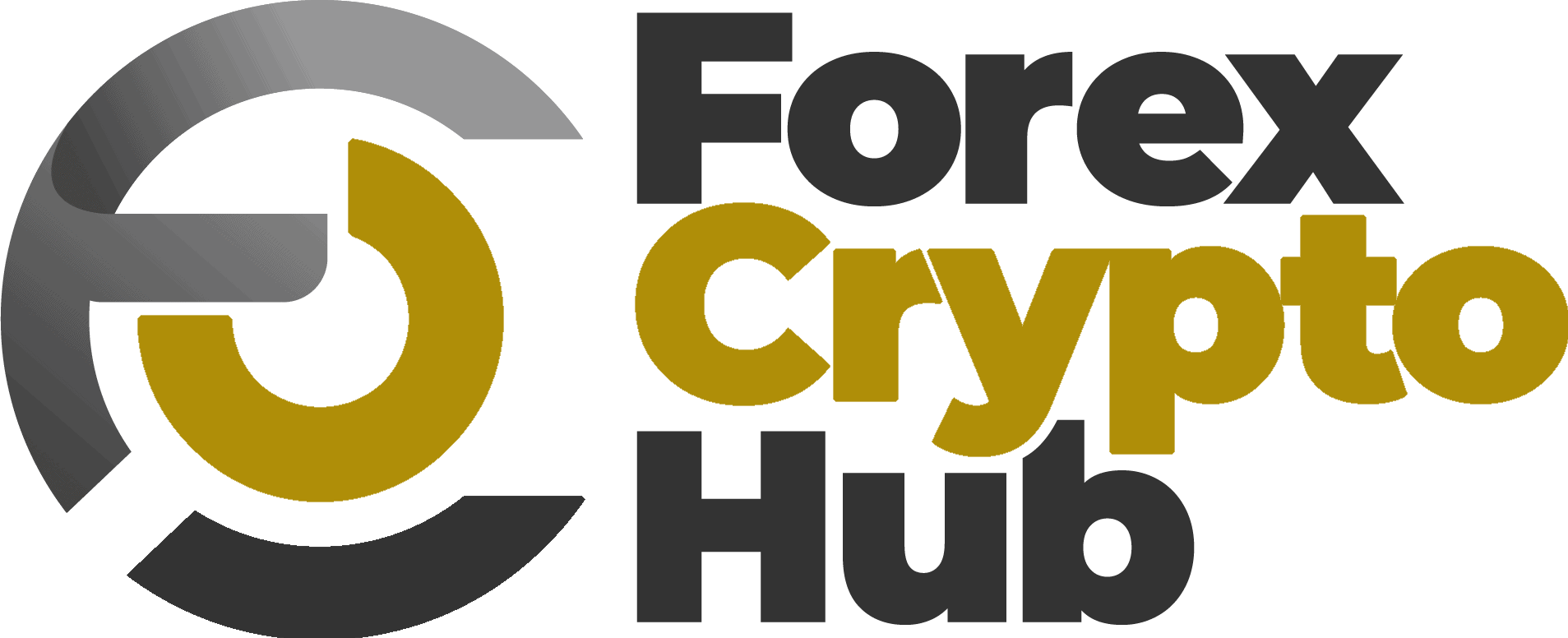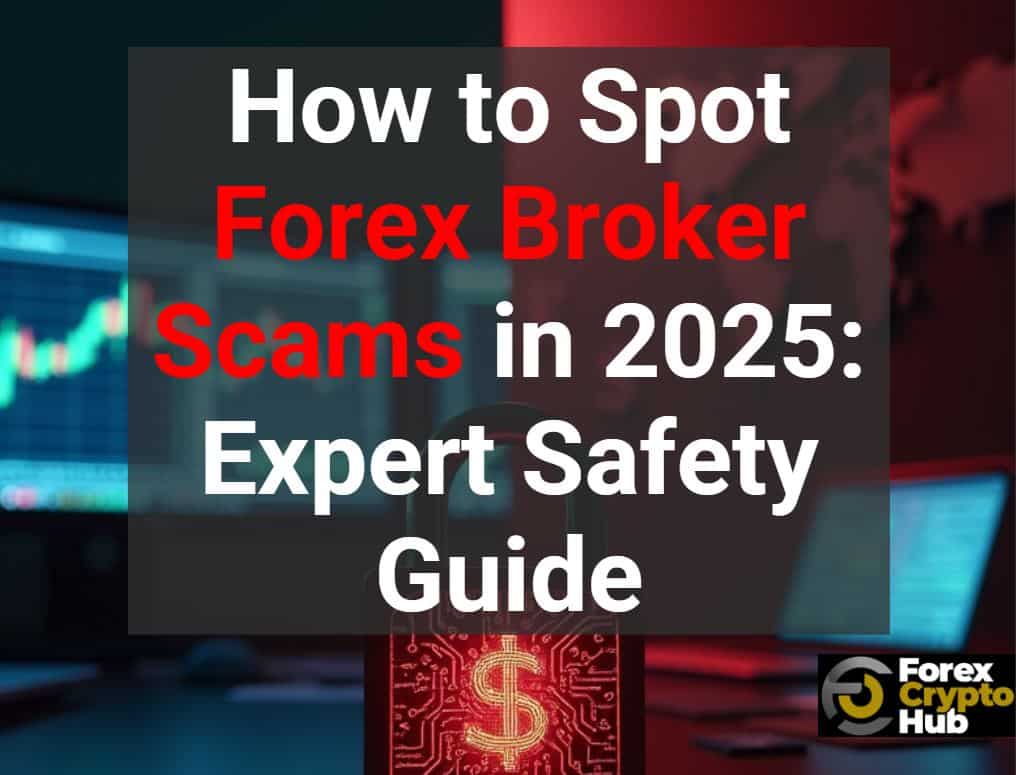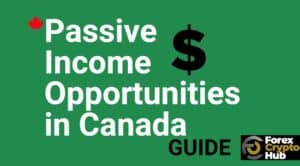The forex market handles a staggering $7.5 trillion in daily trading volume. This massive amount of money attracts scammers who want to take advantage of unsuspecting traders.
Forex broker scams have evolved and become more sophisticated. The numbers tell a sobering story – all but one of these traders lose money and quit the market. Trading happens in a decentralized environment, which makes it harder for regulators to track transactions. This creates an ideal setup for fraud.
You need to spot these trading scams early. More than 60 forex brokers operate worldwide and claim they’re legitimate. These scammers use psychological manipulation and empty promises to trap new traders. Your investments face significant risks when unregulated brokers operate without proper oversight.
In this piece, we’ll help you identify and avoid forex broker fraud in 2025. This knowledge will protect your investments and let you trade confidently. Let’s take a closer look at the safety measures every trader should know.
Understanding Modern Forex Broker Scams
Forex scams have moved way beyond simple email tricks. Today’s scammers run complex operations that tap into both technology and human psychology. Their personalized strategies make these schemes harder than ever to spot.
Latest scam tactics in 2025
Scammers have gotten smarter with their approach. They build personalized schemes using data from breaches, public platforms, and social media37. These fraudsters build detailed fake personas and often pose as successful financiers or business executives with a strong social media presence38. Social media platforms have become the hunting ground for 32% of modern forex scams39.
These criminals use multiple channels to build trust. They mix emails, social media, and video calls to appear legitimate37. They create fake urgency through high-pressure sales tactics that push victims to make quick decisions40.
How scammers exploit technology
Forex scammers’ tech toolkit has grown bigger. They now employ advanced AI tools and deepfake technology to create believable scams37. Here’s what they use:
- AI-powered chatbots that talk like humans
- Deepfake technology that creates realistic video and voice content
- Large language models that write persuasive, error-free messages
Scammers manipulate trading platforms to show fake winning trades and inflated returns that encourage victims to invest more money38. On top of that, they build sophisticated clone websites that look exactly like legitimate broker platforms41.
Common red flags to watch for
You can spot potential forex broker scams through several warning signs. Unregulated brokers who don’t report to any governing body pose huge risks12. Brokers who promise guaranteed returns or risk-free trading should raise red flags42.
Watch out for these warning signs:
- Brokers who push for immediate fund transfers or cryptocurrency payments43
- Platforms showing unusually consistent profits or guaranteed returns12
- Companies without clear information about their executive team or physical location12
- Trading platforms that have “technical glitches” when you try to withdraw money44
Scammers target high-level employees by pretending to be trusted colleagues or external partners who need urgent wire transfers37. They build emotional connections through dating apps and social media before suggesting trading opportunities38.
Most scammers run their operations through unregistered trading websites or third-party trading software. They target victims from outside their country of operation38. These schemes start with small investment requests to build trust. Then they gradually ask for larger amounts while using fake customer service representatives to handle withdrawal issues38.
AI-generated scams create new challenges for 2025. Fraudsters make use of technology to create more convincing deceptions39. You need healthy skepticism toward unsolicited trading opportunities and thorough research to protect your investments.
Verify Broker Legitimacy
Your first defense against forex trading scams starts with checking your broker’s legitimacy. You need a complete verification process that looks at the broker’s credentials and how they operate.
Check regulatory licenses
Legal forex brokers must get licenses from recognized financial authorities to operate in different jurisdictions. These licenses make sure brokers follow strict standards of transparency and financial conduct45. Major regulatory bodies worldwide include:
- Financial Conduct Authority (FCA) in the UK
- National Futures Association (NFA) and Commodities Futures Trading Commission (CFTC) in the US
- Australian Securities and Investments Commission (ASIC) in Australia
- Financial Services Agency (FSA) in Japan46
You can confirm a broker’s license by following these steps:
- Find the regulatory information on the broker’s website, usually in the footer or “About Us” section12
- Write down the license number and regulatory body name
- Go to the official regulator’s website directly (don’t click links)
- Search the regulator’s database to check the license status
- Compare all company details, including the website address47
Brokers without regulation pose big risks because they don’t report to any governing bodies12. Trustworthy brokers display their regulatory information proudly, which shows their steadfast dedication to compliance and transparency45.
Confirm company registration
Looking into company registration goes beyond simple license checks. Financial experts say a complete validation process should cover:
Background Investigation
- Look up the broker’s history
- Find their actual headquarters
- Check executive team details12
Documentation Review
- Look at the broker’s legal structure
- Check capital adequacy requirements
- Make sure they separate client funds3
Licensed brokers must keep client funds in separate accounts and go through regular audits to meet financial regulations45. The CFTC requires US brokers to join the National Futures Association and register with FinCEN as money service businesses1.
People often forget to check the jurisdiction’s reputation. Regulators fall into different tiers based on how strict they are:
- Tier-1: Strictest (US, UK, Australia, Japan)
- Tier-2: Strong but more flexible
- Tier-3: Medium oversight
- Tier-4: Simple oversight
- Tier-5: Minimal or unreliable oversight12
Some scammers try to fool traders by claiming they’re registered with regulators that don’t even watch forex companies12. Remember that regulatory licenses carry different weights12.
You can boost your security by checking the broker’s details in multiple places:
- Official regulatory databases
- Independent review platforms
- Financial service registers
- Corporate registration records6
Watch out for these warning signs:
- No clear information about the executive team
- Missing physical headquarters location
- Few or no customer support options
- Company details that don’t match across sources12
Test the Broker Platform
A complete test of a broker’s platform helps spot potential forex scams. Doing this in a systematic way lets traders assess platform reliability and shield their investments from fraud.
Demo account analysis
A demo account gives you risk-free access to the broker’s trading environment. These accounts come with USD 50,000 in virtual funds and stay active for 90 days4. Your demo account analysis should look at:
- Platform stability and execution speed
- Available trading tools and indicators
- Real-time market data accuracy
- Interface usability and navigation
In fact, demo accounts mirror real market conditions with live price quotes and market rates14. Traders can assess platform performance without risking money. Notwithstanding that, note that demo conditions might not exactly match live trading environments, especially in execution speeds and margin requirements15.
Small deposit test
A small deposit verifies the broker’s operational integrity after demo testing. Here are the key steps:
Start with minimum deposit requirements
Test multiple payment methods
Of course, small initial deposits let you assess broker service quality without much financial risk. This approach gives you a full picture of platform reliability instead of committing large sums right away18.
Withdrawal process check
The withdrawal process often reveals forex broker scams. Your withdrawal test should get into:
Processing Times
- Domestic wire transfers: 1-2 business days2
- International transfers: 2-5 business days8
- E-wallet withdrawals: Generally fastest option19
Security Protocols
- Verification of bank account ownership
- Two-factor authentication systems
- Encryption technology for data protection20
Without doubt, legitimate brokers have clear withdrawal policies and transparent fees. Look for these warning signs during withdrawals:
- Unexpected delays or technical issues
- Hidden fees or charges
- Complex verification requirements
- Unresponsive customer support19
Customer support responsiveness matters across all channels during platform testing. Quality support becomes crucial when handling deposit or withdrawal issues21. The broker’s execution speed and platform stability directly affect trading success21.
Strong security features and segregated client accounts are the foundations of reliable brokers7. This separation protects your funds from the broker’s operational capital18.
Evaluate Trading Conditions
You can spot forex broker scams by taking a close look at trading conditions. The full picture of spreads, commissions, and leverage shows if a broker gives you fair market rates or runs a fraudulent operation.
Spread comparison
The spread is what you pay to enter a trade – it’s the gap between buying and selling prices. Data from more than 10,000 real accounts shows big differences in what brokers charge9. Here’s everything you need to know:
- EUR/USD and other major pairs come with smaller spreads
- Less popular pairs have bigger spreads because fewer people trade them
- News releases and market swings can make spreads wider
ECN brokers give you better deals with tight spreads and quick trades without price manipulation5. But unlike market makers with fixed spreads, ECN spreads change based on what’s happening in the market.
Today’s best spread ranges for major pairs:
- EUR/USD: 0.2-0.3 pips
- GBP/USD: 0.57-0.7 pips
- USD/JPY: 0.33-0.5 pips5
Commission structures
Brokers use different ways to charge you for trading. These are the three main approaches:
Spread-Based Model Brokers make money through the bid-ask spread instead of charging separate fees22. To cite an instance, if EUR/USD’s market spread is 0.2 pips and your broker shows 1.0 pip, they’re making 0.8 pips on your trade23.
Per Lot Commission You pay a set fee between USD 3.00 and USD 7.00 for each standard lot22. This works well for active traders who need exact entry points23.
Hybrid Approach Some brokers mix small spreads with lot-based fees. They might give you 0.2 pip spreads and charge USD 3.00 per lot23.
Big traders can get better rates. The more you trade each month, the less you pay23. Scalpers should watch these costs closely because they affect your profits by a lot22.
Leverage limits
Rules about leverage depend on where you trade and who’s watching. U.S. traders face strict limits:
- 50:1 for major currency pairs
- 20:1 for non-major currency pairs
- 10:1 for exotic pairs and precious metals24
These rules protect retail traders from too much risk. With 50:1 leverage, you can trade USD 50,000 using just USD 1,000 as backup money24.
Offshore brokers might let you use up to 1:2000 leverage, but they’re not as safe25. European professional traders can get up to 1:500 leverage, but they lose some protection features25.
Smart leverage use means knowing:
- More leverage means bigger wins and losses
- Market changes affect how much margin you need
- Your broker might ask for more margin on bigger trades26
Your account needs 100% of the required margin to keep trades open. If you fall short, the system closes your biggest losing trade first26. Some platforms help by warning you when your funds drop below 120% of what you need26.
Review Security Features
Security features are the foundations of a trustworthy forex broker. Cyber threats keep evolving, and strong security measures have become significant to protect traders’ funds and personal information. Let’s take a closer look at everything in security you should check when picking forex brokers in 2025.
Data protection measures
Data protection stands at the forefront in today’s digital world. Good forex brokers use multiple security layers to protect their clients’ information:
Encryption technologies: Top brokers employ high-level encryption, such as 256-bit SSL (Secure Socket Layer) encryption, to protect data between traders’ devices and their servers27. This encryption scrambles sensitive information, making it almost impossible for hackers to decode.
Firewalls and server security: Strong security setup needs both physical and software firewalls to stop unauthorized access to the broker’s network and systems27. Server security should have multiple protection layers to handle the huge amount of financial and personal data processed each day.
Two-factor authentication (2FA): This extra security layer needs users to provide two forms of ID before they can access their accounts28. Users typically need a password and a one-time code sent to their phone or email. 2FA reduces the risk of unauthorized access by a lot, even if someone gets hold of the password.
Anti-Money Laundering (AML) procedures: Good brokers follow strict AML rules. They verify customer identity, watch transactions, and report anything suspicious to authorities27. These steps help stop fraud and money laundering.
Data Leak Prevention (DLP) solutions: Better brokers put money into DLP tech that tracks data movement inside and outside the company29. These tools can spot and block unauthorized sharing of sensitive data, which cuts down the risk of data breaches.
Backup and recovery systems: Good brokers keep solid backup and disaster recovery solutions to ensure business keeps running and accounts stay safe27. These systems help quickly restore client data if data gets lost or cyber-attacks happen.
Here’s what to check in a broker’s data protection:
- Look for “https” in the URL to confirm SSL encryption
- See if they offer 2FA in account settings
- Read their privacy policy to see how they handle and protect data
- Ask about their server security and backup systems
Fund safety protocols
Protecting traders’ money matters just as much as protecting their data. Here are the main fund safety protocols to watch for:
Segregated client accounts: Good brokers keep client money in separate accounts at major banks, away from their business funds27. This means traders can get their money back whatever happens to the broker. U.S. brokers must join the National Futures Association and register with FinCEN as money service businesses30.
Regulatory compliance: Brokers under credible financial authorities follow strict rules, including various security measures27. The main regulators are:
- Financial Conduct Authority (FCA) in the UK
- Commodity Futures Trading Commission (CFTC) in the USA
- Australian Securities and Investments Commission (ASIC) in Australia
Compensation schemes: Some brokers join investor compensation schemes for extra protection. FCA-regulated brokers in the UK are covered by the Financial Services Compensation Scheme (FSCS)28.
Regular audits: Good brokers get checked often by independent firms to ensure they follow financial rules and security standards31. These checks help keep things transparent and accountable.
Transparent withdrawal policies: Honest brokers have clear withdrawal rules with no hidden catches32. Watch out for brokers that make it hard to withdraw money or cause delays – this might signal fraud.
Risk management measures: Pick brokers that use strong risk management, like negative balance protection, so traders can’t lose more than what’s in their account11.
Here’s how to check a broker’s fund safety:
- Check their regulatory status with financial authorities
- Make sure they keep client funds separate
- See if they’re part of compensation schemes
- Look at their withdrawal rules and timing
- Ask how often they get audited
Be careful with brokers offering huge leverage ratios – this might mean weak safety measures. Some offshore brokers might offer leverage up to 1:2000, but they usually have fewer safeguards11.
Note that forex trading always carries risks, even with strong security in place. Traders should know their risk limits and get professional advice when needed33.
A full picture of a broker’s security features will cut down your risk of getting caught in forex scams. Good brokers are open about their security and will give you information when you ask. If they dodge questions about security, take it as a warning sign and be careful.
Check Customer Support Quality
Quality customer support sets legitimate forex brokers apart from potential scammers. A full picture of support services helps protect traders from fraud and will give a reliable helping hand when needed.
Response time testing
Quick response times across support channels show a broker’s steadfast dedication to customer service. We tested 241 forex brokers, and all but one of these companies gave immediate chat support34. The best service standards should include:
- Live chat responses within seconds
- Phone support without long wait times
- Email replies within 24 hours35
The best way to check response times is to contact support during peak trading hours between 13:00 and 16:00 UTC34. This timing shows how well brokers handle their busiest periods. Brokers like FX Giants, FXCH, and IC Markets stand out with their lightning-fast responses through dedicated support teams34.
Support channel verification
A well-laid-out support structure has multiple ways to communicate. Professional brokers provide:
- 24/5 support during market hours
- Live chat to help right away
- Email support to handle detailed questions
- Phone support for urgent issues10
The core team should give consistent answers no matter how you reach them35. You should focus on checking:
- Physical office locations
- Company registration details
- Support team credentials
- Document submission procedures13
Document handling process
Document processing speed often reveals how well a broker operates. Legitimate brokers have clear procedures to handle sensitive information and usually offer:
Secure Upload Options
- Dedicated client portal to submit documents
- Encrypted file transfer systems
- Multiple language support for document processing36
Verification Timeline Prominent brokers process standard verification documents within 24-48 hours. Everything in document handling should include:
- Simple instructions to submit documents
- Secure storage protocols
- Quick verification procedures
- Regular status updates35
Quality customer support goes beyond simple issue fixing. Support teams must know:
- Platform functionality
- Trading conditions
- Account management
- Security protocols35
Reliable brokers keep communication clear throughout the document handling process. They update you regularly about verification status and explain any extra requirements clearly36.
Watch out for warning signs when support staff:
- Dodges direct answers
- Pushes for immediate deposits
- Won’t provide verification details
- Gives inconsistent responses13
Customer support quality is a vital indicator of broker reliability. Testing response times, checking support channels, and evaluating document handling procedures are a great way to get identify trustworthy forex brokers and avoid potential scams.
Conclusion
You need alertness and solid research to protect yourself from forex broker scams. Scammers keep improving their tactics, which makes it significant to know the latest fraud prevention strategies.
A legitimate broker shows transparency through proper licensing, competitive trading conditions, and reliable security measures. Traders should verify regulatory compliance, test platforms well, and assess customer support quality before investing a lot of money.
Of course, the safety measures in this piece will help protect you from potential forex scams. Here are the vital steps:
- Check broker licenses and registration
- Test platforms with demo accounts first
- Start with small deposits
- Verify withdrawal processes
- Get into security features well
Your success in forex trading depends on picking trustworthy brokers and staying alert. These safety guidelines will reduce your risk of falling victim to forex scams by a lot and build a foundation for secure trading.
The complex world of forex trading demands careful research and thoughtful investment decisions. Your financial security relies on making smart choices.
FAQs
Q1. How can I identify a potential forex broker scam? Look out for unrealistic promises of guaranteed returns, high-pressure sales tactics, requests for personal information, unregistered businesses, lack of physical addresses, and broken website links. Be wary of brokers offering unusually high leverage or only accepting cryptocurrency payments.
Q2. What are the key indicators of a legitimate forex broker? A legitimate broker should be properly licensed and regulated, offer competitive trading conditions, maintain robust security measures, provide clear contact information, and have responsive customer support. They should also have transparent withdrawal processes and segregated client accounts.
Q3. What steps should I take to verify a forex broker’s legitimacy? Check the broker’s regulatory status with relevant financial authorities, examine their trading platform through a demo account, start with a small deposit to test their services, verify their withdrawal process, and thoroughly evaluate their customer support quality and response times.
Q4. What security features should I look for in a forex broker? Look for brokers that use strong encryption technologies, implement two-factor authentication, maintain segregated client accounts, participate in investor compensation schemes, and undergo regular third-party audits. They should also have clear data protection policies and fund safety protocols in place.
Q5. How important is customer support in identifying a reliable forex broker? High-quality customer support is crucial in distinguishing legitimate brokers from potential scammers. Evaluate their response times across multiple channels, verify the consistency of information provided, and assess their document handling process. Professional support staff should be knowledgeable about platform functionality, trading conditions, and security protocols.
References
[1] – https://www.cftc.gov/sites/default/files/2023-04/SpotFraudSites.pdf
[2] – https://www.oanda.com/us-en/trading/funding-and-withdrawals/
[3] – https://www.trulioo.com/industries/forex-identity-verification
[4] – https://www.forex.com/en-us/demo-account/
[5] – https://tradingfibonacci.com/index.php/brokers/forex-brokers-comparison
[6] – https://www.investopedia.com/articles/active-trading/101415/6step-guide-making-sure-your-broker-legit.asp
[7] – https://ifixscreens.com/how-to-evaluate-the-reliability-of-a-forex-trader/
[8] – https://www.forex.com/en-us/help-and-support/funding-your-account/
[9] – https://www.myfxbook.com/forex-broker-spreads
[10] – https://traders.mba/brokers/how-to-assess-forex-broker-customer-support/
[11] – https://www.cyberdb.co/how-to-ensure-cyber-security-for-your-forex-trades/
[12] – https://www.forexbrokers.com/guides/forex-trading-scams
[13] – https://www.wikifx.com/en/newsdetail/202308214114562241.html
[14] – https://www.investing.com/brokers/guides/forex/forex-demo-accounts-how-demo-accounts-can-help-you-start/
[15] – https://www.forex.com/en-us/help-and-support/demo-trading-accounts/
[16] – https://www.earnforex.com/low-deposit-forex-brokers/
[17] – https://www.daytrading.com/brokers-low-deposit
[18] – https://www.fxempire.com/brokers/best/low-minimum-deposit
[19] – https://www.fxfundmanagers.com/how-to-withdraw-profits-from-forex-brokers/
[20] – https://traders.mba/brokers/how-to-assess-withdrawal-and-deposit-procedures-in-forex-brokers/
[21] – https://www.morpher.com/blog/forex-trading-platform
[22] – https://www.fpmarkets.com/education/trading-guides/understanding-forex-broker-commissions-fees-and-how-they-facilitate-trades/
[23] – https://accountinginsights.org/how-are-forex-commissions-calculated-and-paid-to-brokers/
[24] – https://brokerchooser.com/safety/leverage-margin-limits-us
[25] – https://www.fxempire.com/brokers/best/high-leverage
[26] – https://www.forex.com/en-us/help-and-support/margin-and-leverage/
[27] – https://traders.mba/brokers/what-security-measures-should-forex-brokers-have/
[28] – https://www.litefinance.org/blog/for-beginners/safety-on-forex/
[29] – https://leverate.com/blog/fintech/safeguarding-forex-broker-operations-a-comprehensive-look-at-cybersecurity-measures/
[30] – https://www.cftc.gov/LearnAndProtect/AdvisoriesAndArticles/CustomerAdvisory_MustKnowForex.html
[31] – https://advancedmarkets.com/funds-safety-checklist-for-the-institutional-fx-clients/
[32] – https://traders.mba/brokers/how-to-evaluate-forex-brokers-approach-to-client-security/
[33] – https://www.ebc.com/forex/measures-for-ensuring-the-security-of-foreign-exchange-funds
[34] – https://www.earnforex.com/forum/threads/assessing-the-forex-brokers-customer-support-service.45956/
[35] – https://traders.mba/brokers/how-to-assess-the-customer-service-quality-of-forex-brokers/
[36] – https://www.forex.com/en-us/help-and-support/opening-trading-account/
[37] – https://www.forexgdp.com/news/modern-scams-2025/
[38] – https://www.cftc.gov/LearnAndProtect/AdvisoriesAndArticles/CustomerAdvisory_RomanceScam.html
[39] – https://www.financemagnates.com/forex/32-of-scams-target-investors-on-social-media-ai-generated-scams-to-rise-in-2025/
[40] – https://www.fxleaders.com/learn-forex/forex-trading-scams/
[41] – https://www.forexbrokers.com/education/types-of-forex-scams
[42] – https://www.dukascopy.com/swiss/english/marketwatch/articles/forex-trading-scams/
[43] – https://www.cftc.gov/LearnAndProtect/AdvisoriesAndArticles/fraudadv_forex.html
[44] – https://www.investopedia.com/articles/forex/09/spot-a-forex-scam.asp
[45] – https://www.fintecharbor.com/how-to-check-forex-broker-license/
[46] – https://www.forex.com/en-us/learn-forex-trading/forex-regulations/
[47] – https://forexrev.com/how-to-verify-forex-cfd-brokers-licence/




